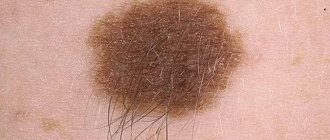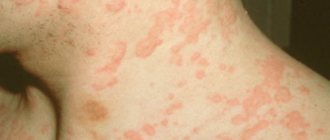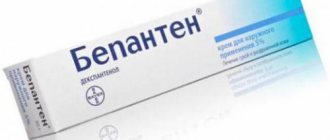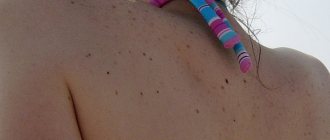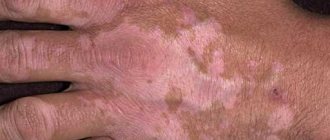A person’s face is his calling card, but any health problems are immediately reflected on his face. Many specialists even know how to determine by the location of pimples and rashes which organ requires treatment, but what do white spots on the face mean?
Chantelle Brown-Young from Toronto is a fashion model whose white spots on her face are caused by vitiligo.
Pityriasis versicolor
A disease caused by a fungal infection. This disease affects people predisposed to “sun fungus” in spring and summer, during periods of high solar activity.
Light spots of irregular shape appear on the neck, chest, and back. Their surface is characterized by peeling.
These defects are formed due to a fungus that penetrates the upper layers of the skin, disrupting the functioning of melanocytes.
Due to the lack of melanin, the skin does not darken in places, does not tan, and remains light.
In this case, you need to consult a dermatologist.
Depending on the degree of infection, treatment is prescribed in the form of antifungal ointments, shampoos, and soaps.
You can use salicylic alcohol, apple cider vinegar. The affected areas are wiped with a weak solution.
Eczema
This disease also belongs to the category of chronic. One of the manifestations is dry, flaky patches all over the body. In most cases, the pathological process is allergic in nature. Food dyes, preservatives, rubber products, jewelry, medications, dust, animal hair, varnishes, paints, etc. can cause rashes on the body.
A doctor can make the correct diagnosis
Less commonly, eczema develops as a result of infection. The disease can be fungal, viral or bacterial. If you had to deal with flaky spots, we are talking about dry eczema. Additionally, there is a burning sensation and itching.
Drug therapy for eczema includes the use of hormonal drugs, antihistamines, and anti-inflammatory ointments. If the disease is infectious in nature, antifungal, antiviral or antibacterial drugs may additionally be prescribed.
If flaky spots appear on the body, in any case you need to consult a specialist. However, with a simple visual examination, the doctor will not be able to make an accurate diagnosis. The correct treatment can be prescribed after a full examination.
Medicinal leucoderma
It is observed when using various ointments and creams.
The consequences of psoriasis, seborrheic eczema, and pityriasis rosea can also provoke the so-called false leucoderma.
Scales and crusts on damaged areas do not allow ultraviolet rays to penetrate the skin and cover it, thereby causing the effect of a false disease.
In this case, no treatment is required. Over time, the skin regenerates and restores pigment in damaged areas.
Red dry spots
Most often, an allergic reaction is manifested by red rashes. In most cases, unpleasant symptoms develop in childhood. Over time, the number of allergens only increases. If a child initially develops scaly rashes when consuming milk or chocolate, an allergy to citrus fruits, brightly colored fruits, and seafood later develops. Red rashes may also indicate the development of contact dermatitis. The disease is accompanied by itching and irritation. Weeping may be present. If therapy is not started in a timely manner, a bacterial infection cannot be ruled out.
Shingles is also characterized by red spots on the body. The causative agent is the herpes virus. The problem is that pathogenic microflora can affect not only the epidermis, but also the nervous system. The disease can be transmitted through household contact. Therefore, if symptoms are detected in one family member, everyone should be tested. Statistics indicate that shingles may affect one in four people who survive chickenpox. Both ailments are of a similar nature.
Red spots on the body are one of the signs of lichen
Shingles is characterized by a rapid onset. There is a strong burning sensation in the affected area. Most often, red, scaly spots begin to appear on one side. Due to the fact that the virus accumulates to a greater extent in the nerve ganglia, the rash can be localized along the spinal nerves, sometimes in the area of the trigeminal nerve (on the face).
You can also read: Causes of spots on the skin
Dry skin and burning are not the only symptoms of the pathological process.
With herpes zoster, a person may complain of a significant deterioration in health and weakness.
The temperature in most cases remains within the normal range, less often it rises to low-grade levels.
In severe cases of the disease, problems with the gastrointestinal tract and urinary system may occur (the process of emptying the bladder becomes more difficult).
Shingles can lead to the development of serious complications, so you should not delay treatment. Treatment involves the use of antiviral agents, which are selected individually in accordance with the characteristics of the patient’s body, as well as the stage of the pathological process.
Vitiligo
A disease that affects people at any age - women, men, children.
Light spots appear on the skin, clearly defined, without peeling.
The skin of the face, hands, groin, and elbows is usually affected. Gradually they increase, merge, and can cover large areas.
People with dark skin suffer most often during the summer.
Hair in damaged areas also becomes bleached, sweating is impaired, skin sensitivity is lost, and solar dermatitis develops.
Sometimes the spots disappear on their own. The exact cause of the disease is not known.
The most likely cause is disruption of the liver, endocrine system, consequences of infectious diseases, stress, and hereditary predisposition.
Treatment of the disease is long and difficult.
The increase in the likelihood of education is influenced by:
- Liver dysfunction
- Pathology of the endocrine system organs
- Deviation in the functioning of the pituitary gland
- Diseases of the kidneys and adrenal glands
- Diseases of the gastrointestinal tract
- A malfunction of the immune system, in which melanin-secreting cells are destroyed
- Consequences of infectious diseases
- Chronic stress
- Various physical injuries
- Lack of vitamins
- Sunburn
- Heredity
- Skin contact with some synthetic fabrics, detergents
- Pregnancy
The primary treatment is to improve the functioning of the liver and endocrine system.
Photosensitizing drugs and ultraviolet irradiation sessions are also prescribed.
If medication and physiotherapeutic methods are not effective enough, the surgeon prescribes a skin graft.
If you have suffered any injuries, burns, or have had chickenpox, rubella, the spots may persist as a consequence of the problems you have suffered. They will disappear after some time.
In any case, white spots signal us about problems in the body.
Even a small spot that appears on the skin for no reason is a reason to contact a dermatologist.
This disease is not contagious, but can be inherited.
Therefore, it is necessary to take some preventive measures:
- Do not sunbathe immediately; if you are sweating, first dry yourself with a dry towel;
- Avoid prolonged drafts;
- Remember that high air humidity has a detrimental effect on your skin.
- Before turning on fans and air conditioners, remove moisture from the surface of the skin.
Causes
The reasons for the appearance of white spots are difficult to find out. A dermatologist cannot always determine the cause of the appearance.
Factors influencing the development of depigmentation:
- the habit of sunbathing during the period of active sun - from 12 to 16 hours or excessive love for the solarium;
- decrease in the body's defenses;
- deficiency of vitamins and nutrients in general;
- pathologies of the gastrointestinal tract, endocrine system;
- stress factors;
- hormonal changes, including pregnancy;
- genetic predisposition.
Even if there have been cases of birth of albinos or vitiligo in the family, self-diagnosis is inappropriate. A harmless light area may hide a serious illness.
In children, the appearance of areas of depigmentation may be a consequence of severe pathology of infectious origin. Most often, a similar picture is observed in infants or children of the first year of life.
Additional factors that contribute to the loss of melanin in the skin in children are the introduction of complementary foods, helminthic infestations, and the body’s reaction to the vaccine.
A diet that helps remove light spots from the skin
For successful treatment and prevention of the disease, it is recommended to exclude spices from the diet: garlic, pepper, ginger, raw onions.
The body needs microelements copper, zinc, iron. Since their effects are mutually exclusive, they should not be taken simultaneously. The drugs should be taken in a separate course, observing the required intervals after each course.
Where is copper found?
These are pork liver, hazelnuts, cocoa, brewer's yeast, cheese, rose hips, cucumbers.
When copper enters the body, iron is better absorbed, the aging of the body slows down, hair structure improves, and skin color improves; the body becomes mobile and flexible.
Copper deficiency leads to fatigue, disruption in the formation of thyroid hormone (thyroxine), the function of blood formation is disrupted, and can lead to weakening of bone and connective tissue, and diabetes mellitus.
Where is zinc found?
These are oysters, sunflowers, pumpkin seeds, lentils, nuts, blueberries, mushrooms, brewer's yeast. Zinc is necessary for the normal functioning of all cells in the body.
A deficiency of this microelement leads to decreased appetite, weight loss, and hair loss.
The risks of colds and infectious diseases increase.
Where is iron found?
These are pork, beef liver, eggs, beans, peas, buckwheat, oats, prunes, wheat bran, raspberries, cocoa, brewer's yeast.
Iron serves to maintain the level of hemoglobin in the blood, for the formation of red blood cells, lymphocytes - blood cells of the human immune system.
Iron deficiency in the body leads to a decrease in hemoglobin levels (anemia, anemia).
In childhood, growth and mental development are delayed. Adults are characterized by rapid fatigue.
PUVA therapy, UVB sessions
Both PUVA therapy and ultraviolet irradiation are light therapy methods.
They have proven themselves best in the treatment of the following skin ailments:
- vitiligo;
- psoriasis and parapsoriasis;
- dermatitis (atopic and seborrheic);
- lichen;
- lymphomas;
- many other rare skin conditions that can cause white spots.
PUVA therapy, also known as PUVA therapy, is a method in which diseased skin is irradiated using long-wave ultraviolet radiation.
This is combined with a photoactive substance (psoralens from the class of furocoumarins):
You will notice signs of skin improvement after just 4 treatments.
- First, you apply or ingest a psoralen product (take the drug with milk or bread).
- Then you go into the cabin and stay under the UV rays for several minutes.
- Another option is to take a psoralen bath a couple of hours after irradiation.
You will notice signs of skin improvement after 4 procedures, and remission after the course lasts from 18 months to 3-4 years. The course includes 20 sessions.
It also has a positive effect on the immune system. You can have from 2 to 4 sessions per week, and have a new consultation with a dermatologist every 14 days.
Contraindications:
- Hypersensitivity to psoralen;
- Diseases in which sensitivity to light develops (lupus erythematosus, porphyria);
- Melanoma;
- Pregnancy;
- Heart diseases.
UFO (ultraviolet irradiation) is another method of physiotherapeutic treatment. Its work is based on the fact that certain atoms and molecules selectively absorb light energy.
The molecules in the tissues are then in an excited state. This is how photochemical processes are launched in RNA, protein and DNA molecules.
Indications:
For therapy to be successful, before starting it, the doctor will determine your biological dose of UV rays.
- vitiligo;
- pyoderma;
- seborrhea;
- psoriasis.
For therapy to be successful, before starting it, the doctor will determine your biological dose of UV rays. The course lasts from 10 to 20 irradiations. They are held once every 2 days.
Contraindications:
- predisposition to bleeding;
- neoplasms (malignant only);
- tuberculosis (in the active stage);
- thyrotoxicosis;
- hypertension;
- exacerbation of intestinal and stomach ulcers;
- blood diseases (systemic);
- atherosclerosis (coronary vessels and arteries of the brain);
Procedures are carried out with caution for acute diseases of the skin, nasopharynx and inner ear, for skin tuberculosis and for wounds caused by anaerobic bacteria. https://www.youtube.com/embed/22G2ehf8Gq4
Treatment of white pigment spots on the skin - vitiligo
Modern treatment methods are constantly updated with new effective drugs. Only after the diagnosis has been clarified, comprehensive treatment is prescribed.
Photochemotherapy (PUVA)
In half of the cases the treatment is successful. To increase skin sensitivity, the patient is prescribed a photosensitizing drug, then in a special solarium he is irradiated with ultraviolet rays.
The procedures are repeated every other day for about two months. After three months, the course can be repeated.
You can achieve a cure in a shorter period of time, remove even old spots using a laser.
Laser treatment is more expensive and more effective, but there is a risk of burns.
If treatment does not work, it is recommended to eliminate small white spots surgically using donor skin tissue.
Ointments, shampoos, soaps, creams
This is not the most effective way to deal with white spots, because the problem is hidden much deeper than on the surface of the skin.
But they can also help. It is best to use ointments when dealing with spots caused by lichen or mycosis. If you are prescribed Nizoral, Orungal or Lamisil tablets, it is recommended to enhance their effect with similar ointments. The same goes for antibiotics.
Here are a few names of ointments that dermatologists prescribe for leukoderma of various origins:
- Methylpred (price from 350 rubles), alklometasone (price from 320 rubles). These are glucocorticoids in ointments. Can be used for vitiligo.
- Melagenin. A popular drug for the treatment of vitiligo. Available as a lotion. The basis of the product is human placenta extract. When using the product, the repigmentation process is accelerated, the skin absorbs ultraviolet rays and the formation of melanin is stimulated. A positive effect is also observed in cases with loss of pigmentation after psoriasis or burns and wounds. It is also effective for eczema and psoriasis. Price from 4400 rub.
- Betamethasone. A glucocorticoid agent that will be effective for both vitiligo and fungi. Price from 176 rub.
- Clotriamzole. Ointment with a wide spectrum of action. It will help get rid of causes of white spots such as lichen and fungal diseases; it is also effective for eczema and psoriasis. Price – 97 rub.
- Irunin. An antifungal agent with the active substance itracanazole. Inhibits the membranes of many fungi. Price from 352 rub.
https://youtube.com/watch?v=tMdFWC5WDAc
Diseases in children
Some illnesses are specific only to children. A child’s illness can be of several types:
- Pityriasis white. Refers to a type of dermatitis, or inflammation of the skin of a child. First, small, smooth white dots form, then they become rounded spots. They do not cause discomfort, but can develop under the influence of sunlight. As a rule, 30% of children aged 3 to 16 years are susceptible to pityriasis. The disease is often confused with a fungal disease and antifungal ointments are used without a doctor’s prescription. This should never be done, otherwise there may be complications. For treatment, a dermatologist may prescribe steroid ointments and recommend using gentle cleansers for bathing.
- Hypomelanosis in a child. White pigment spots on the skin of a child indicate improper formation of pigment after an illness or simply immediately after birth. Typically, skin lesions can first be seen on the scalp. The child does not feel discomfort, but the reason that provoked such a defect can affect its normal development.
Interesting! The famous Canadian fashion model and actress Winnie Harlow suffered from vitiligo since childhood. Large symmetrical spots cover a significant part of its body. But this did not stop her from achieving career heights and winning millions of fans.
Cosmetology procedures
After completing the course of treatment, you need to seek help from a cosmetologist. To cure skin defects, he will prescribe a line of regenerating products that restore intracellular processes, exfoliate, and whiten. Along with cosmetics, a specialist can help get rid of stains through the following cosmetic procedures:
- Glycolic peeling.
- Laser removal.
- Mesotherapy.
- Phototherapy.
- Cryodestruction.
Small spots on the face (1-2 mm) of white color are very common. These points are called closed comedones. They are a pore clogged with a plug, formed when the sebaceous glands malfunction and the accumulation of sebum. The spots are very dense, lumpy, covered with white dots. The main places where white spots appear are the T-zone and cheeks. To solve this problem, you need to contact a cosmetologist who will cleanse the skin and remove comedones.


